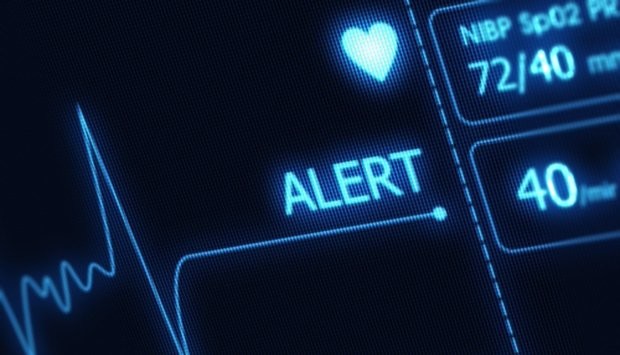
How the Internet of Things Has the Potential to Improve Healthcare
The Internet of Things has applications that range all the way from automated manufacturing, to controlling the temperature of residential air conditioners. One particular area where IoT is hugely beneficial is the medical equipment industry. With IoT devices expected to reach 25 billion by 2020, it’s almost guaranteed that a large number of these sensors will be embedded in medical equipment. What benefits are connected sensors bringing to the medical industry, and are there still concerns to be addressed?
How IoT is Improving Healthcare
According to Digi-Key Electronics, a worldwide distributor of key IoT sensors and technologies, the benefits can be found in a number of areas.
- Dynamically collecting patient data from remote sensors can aid in preventative care by detecting early warning signs of health problems.
- These same sensors could be used in long term care situations, and especially in post-operative care.
- The type of signals that sensors can detect are almost endless. Blood oxygen levels, pulse, insulin levels, blood pressure, temperature, and even chemical balances are just a few examples.
- IoT medication pumps are effective at adequately dosing medications, without the risks of overdose or missed doses that are present when medications are administered manually.
- With properly designed sensors and monitoring tools, patient input can be kept to a minimum. This means that there is less room for error, but also little learning required by the patient. This offers convenience which is especially beneficial for the elderly and disabled.
Challenges for IoT Medical Device Manufacturers
Although there are millions of IoT medical devices in use today, there are numerous opportunities for improvement. Before these high tech devices can truly become the standard for in-patient and out-patient care, these opportunities should be met, and all concerns should be alleviated.
- There is no worldwide standard for wireless connectivity for IoT connected medical devices. The FDA has put forth some strong recommendations, including wireless protocols to use, and what to consider when it comes to interference and data loss. However, robust global standards are necessary for widespread adoption and implementation.
- Security is still a major concern for IoT devices. Earlier this year, it was revealed that the most popular IoT medical pumps in the United States were vulnerable to hacking, and could even be controlled from a remote source.
Benefits to Non-Reporting Equipment
Although patients will always be the priority in medicine, there are other ways that the Internet of Things will help to improve the healthcare system. Connected devices will benefit even the devices that aren’t required to collect data. Electronic sensors can be built in to critical equipment and can be used to collect usage statistics, and even track and schedule maintenance. With all of the data coming to a central location, it could increase the efficiency of hospitals and clinics, which in turn could reduce operating costs. The obvious knock on effect is that patients would receive better care from equipment that is maintained to a higher standard.
Connected Devices Simply Make Sense
There is perhaps no other industry that could benefit as much from IoT as healthcare. Connected medical devices will free up much needed resources in clinics, reduce the stress and cost for those undergoing care, and will improve the service in hospitals and other health care facilities. Medical IoT recruiting can help to assure that development continues and that good security is in place for medical IoT.
If equipment designers and manufacturers can overcome key security and standards challenges, there is little doubt that IoT devices will be the norm within the next decade, and will be on the leading edge of innovation among the wider Internet of Things. Medical IoT recruiting will be an absolute necessity if we are to keep the IoT area of medicine moving forward.
Posted in Medical IOT | Tagged biometric implants, connected medical devices, IoT medical devices
Experienced Sales Leader and Business Development Professional
7yGood analysis...we have seen a dramatic increase in Medical Device Manufactures needing to improve security and privacy from connected devices. This is not easy to do on remote devices or at scale. They are quickly playing catch up.
Director of Business Value Practice at Red Hat
7yGreat overview! As the population ages, retires and life expectancy grows, we'll also need to tap into IoT consumer devices (and platforms) to assist preventive care and home monitoring. Creating an IoT solution which is enjoyable, noninvasive and baked into everyday life is important. While addressing the security and infrastructure concerns well articulated above - how can we integrate in a enjoyable customer experience to monitor the home?
Engineering | Science | Philosophy
7yTrue Bill. Nurses spend hours collecting blood pressure data. Patients make long queues worried... I can imagine how much time they would save, if every patient was given a wearable that collects this data, after whichever time set. I am hopeful for Medical Internet of Things.
Practice Lead, HEI Innovation at Co-Creation Hub
7yAwesome Piece, Healthcare in developing countries even stand a chance in benefiting more from Medical IoT. Challenges of Privacy and Security still remain the toughest of all, but they can be surmounted.
Executive | Strategist
7yVery good overview Bill. Inevitably, there will be multiple standards and proprietary protocols in industry verticals for #IoT. Cloud based messaging and automation platforms will broker and negotiate the Internet of Everything.